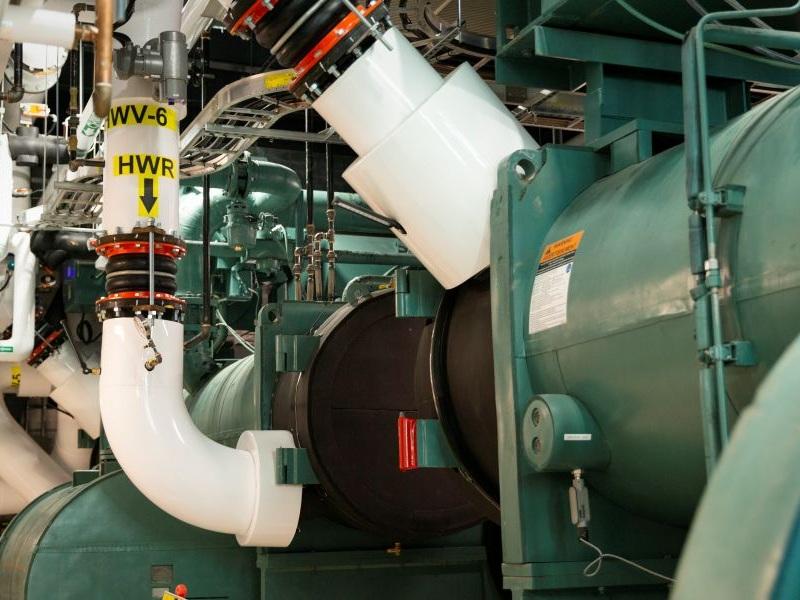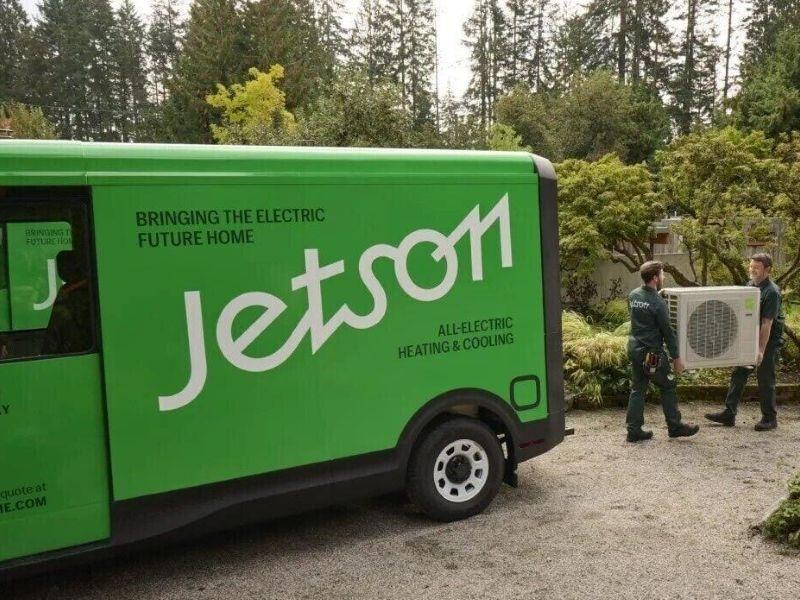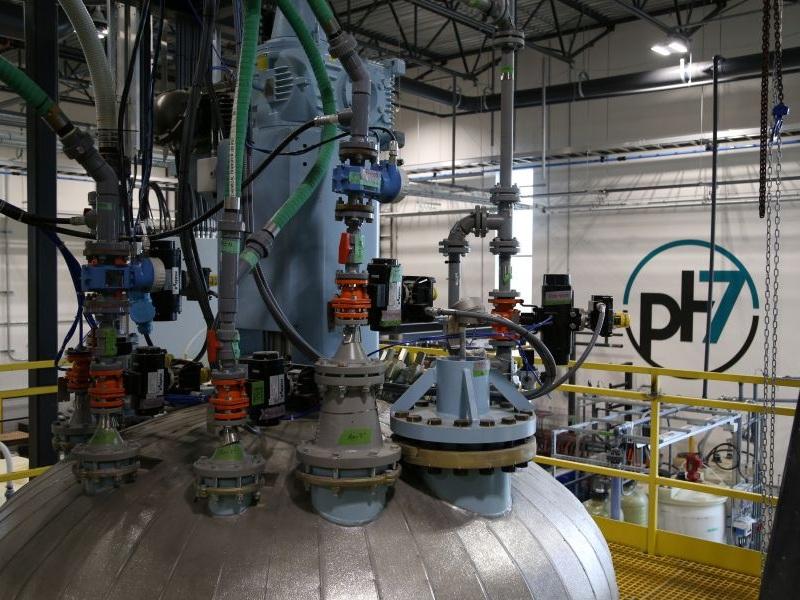
A sizable expansion of Enwave Energy Corporation’s Green Heat system at the Pearl Street Energy Centre will enable more of Toronto's buildings to access low-carbon heating.
At a ceremony Wednesday morning, Enwave commissioned its Green Heat Plant after breaking ground in May 2023. The 60-year-old Pearl Street Energy Centre was upgraded with the addition of a three-storey facility that can deliver approximately six megawatts (MW) of thermal load at full capacity.
The heating will be able to offset the equivalent of up to 11,600 tonnes of carbon dioxide compared to the traditional steam-based method. The reduction is also equivalent to converting 10 million square feet of existing office space from boilers to low-carbon heating, Enwave said in a release.
The Green Heat Plant is contracted to supply The Taylor at 57 Spadina Ave. It will also be connected to a thermal storage tank at The Well, operating effectively as a battery to store and deploy energy for the grid, Enwave’s CEO Carlyle Coutinho told Sustainable Biz Canada in an interview.
A district energy operator based in Toronto, Enwave is known for its deep lake water cooling (DLWC) system that provides sustainable heating and cooling through a web of pipes and heat exchangers that draw from Lake Ontario and Toronto’s buildings.
As the market picks up and the Toronto Green Standard is escalated, Green Heat will be able to help Enwave’s clients meet higher energy and carbon standards, Coutinho said.
“It is also an enabler for existing buildings to decarbonize . . . The retrofit opportunity is humongous.”
The first major Green Heat facility
The plant is the first Green Heat facility of its scale. Enwave maintains similar, but smaller, assets in buildings across the city such as the Fairmont Royal York hotel and The Hospital for Sick Children.
Originally a steam-powered district energy facility, Enwave has included new infrastructure for electricity, chilled water and hot water generation right next to the centre.
Described by Coutinho as a “catalyst for moving energy around the city,” the Green Heat Plant will allow for building offtakers to gain greater value than installing assets on site, and Enwave can more efficiently manage the heating and electrical infrastructure.

“We have the opportunity as a centralized community-level energy (company) to optimize at scale,” he said.
Linked to DLWC, Green Heat will recover waste heat generated by buildings such as hospitals, data centres and research facilities, and transfer it to the Green Heat Plant. Heat pumps will recover the thermal energy and use it to raise the water temperature to almost 77 C. Additional heat will be provided with steam. The heat-upgraded water will be sent to Enwave’s customers for their space heating and hot water needs.
Recycling waste heat rather than expelling it into the air will help reduce energy and carbon emissions by reducing the need for additional gas-powered heating.
The expansion was supported by a grant provided by the Canadian government’s Low Carbon Economy Fund and a $600-million aggregate facility from the Canada Infrastructure Bank (CIB).
“Our investment is paying dividends,” Ehren Cory, CEO of the CIB, said in the release.
Enwave's other projects
The CIB is also backing more of Enwave’s projects in Ontario, such as a wastewater heat recovery system in Mississauga’s Lakeview Village and geoexchange technology at the Etobicoke Civic Centre.
In Toronto, Enwave supplies over 100 buildings with cooling and over 150 with heating, Coutinho said, totalling 90 million square feet of real estate in Toronto. Last year, it expanded DLWC with a fourth intake pipe to add 18 MW of additional capacity.
Over in Prince Edward Island, the company owns waste-to-energy infrastructure that heats more than 125 buildings. Enwave announced a plan earlier this year to build a new waste processing facility in the Atlantic province, which is scheduled to operate in 2028.
Enwave will also be exploring how its district energy assets can more effectively electrify the economy with non-traditional assets, Coutinho said. He previewed the plan last year, which he described as a grid solutions business.










